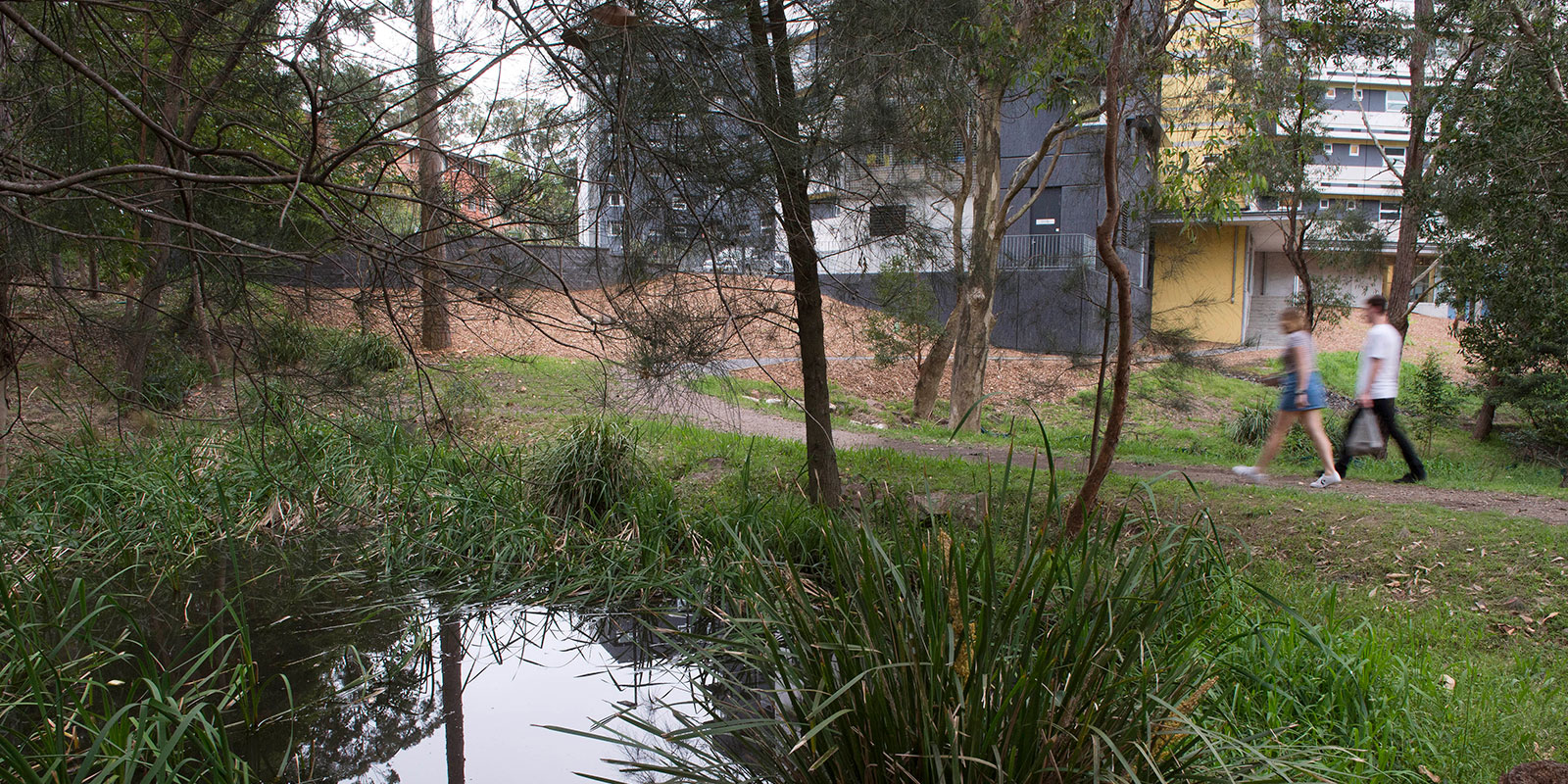

Goal 15:
Life on Land
Alien Species Impact Reduction

The University of Newcastle’s sustainability and biodiversity policies include provisions to manage and reduce the impacts of alien species within our campuses and associated natural areas.
- The Environmental Sustainability Policy commits the University to biodiversity protection and habitat health, which includes weed and invasive species control as part of maintaining ecological integrity. The policy was effective from the 8th of December 2022 and will be reviewed in December 2025.
- Our Environmental Sustainability Plan has a dedicated section on biodiversity and landscaping.
Our Callaghan campus is a strategic bushland zone of about approximately 140 hectares. Twenty-five of these are dedicated ecological conservation zones and freshwater wetland areas.- It is our responsibility to ensure its ecological sustainability and safeguard the ecosystems within it as well as the greater system of which it is a part. To do this, we are committed to actively managing our campus to restore, improve and maintain this unique biodiversity.
- Three important ecosystems exist within it – the Coastal Foothills Spotted Gum (Ironbark Forest), the Riparian Closed Forest and freshwater wetlands – in which lives 188 native flora species, 116 bird species, 14 native mammal species, 11 frog species and 18 reptile species.
- A range of migratory and threatened species are also occasionally seen here, including the Powerful Owl, the Little Lorikeet, the Little Eagle, the Varied Sittella and the Grey-headed Flying Fox.
- Further, the University’s Central Coast campus covers an area of approximately 113 hectares. The western half of the site contains the University’s Central Coast campus (Ourimbah). The eastern half comprises extensive areas of natural bushland and several headwater tributaries of Bangalow Creek, itself a tributary of Ourimbah Creek. The area has extensive riparian zone vegetation along Bangalow Creek which includes Narrabeen Warm Temperate Subtropical Rainforest), an Endangered Ecological community (EEC).
- Under the University’s Biodiversity & Landscaping goals, the grounds and bushland areas are actively managed, including control of invasive weeds, habitat restoration, and planting of native species to outcompete alien species.
- On the Callaghan Campus, the campus landscaping and bushland management plans (e.g. the Callaghan Landscape Management Implementation Plan) include sections on weed management, invasive species monitoring, and rehabilitative planting to reduce the ecological influence of alien species in remnant bushland and wetland zones.
- Our Public Domain Manual is the University's instruction manual for all works on our campuses, which is inclusive of biodiversity and landscape.

2024 Impact Reduction
- The University’s Biodiversity & Landscaping objectives explicitly commit to actively managing the campus’s bushland and natural areas, which necessarily includes weed control and invasive species management.
- A research piece from the University on the 'Capacity and capability of remote sensing to inform invasive plant' highlights use of remote sensing and ecological monitoring techniques to track and manage invasive plants in ecosystems subject to urban development and climate change pressures.
The University of Newcastle acknowledges the traditional custodians of the lands within our footprint areas: Awabakal, Darkinjung, Biripai, Worimi, Wonnarua, and Eora Nations. We also pay respect to the wisdom of our Elders past and present.